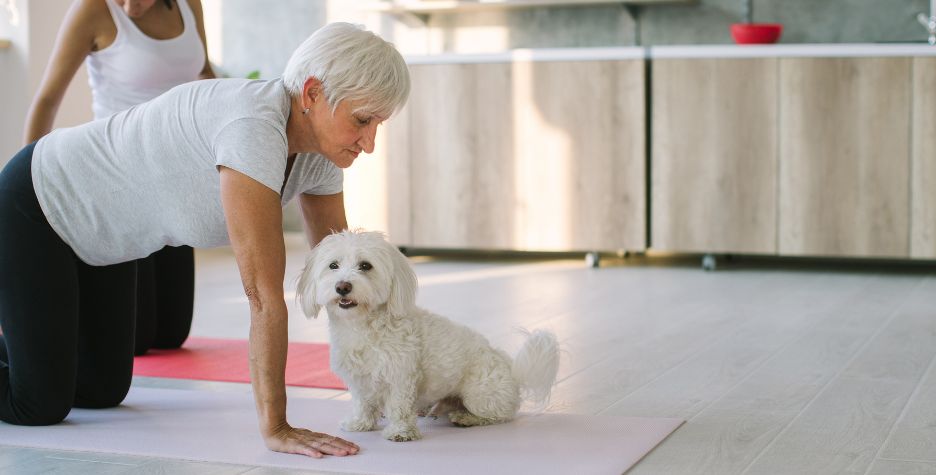|
By: Dr. Beth Templin
When we think about exercises to strengthen the core, we often think about exercises like crunches or sit-ups. While those popular options can help to improve your core strength, they can sometimes be difficult or painful for people with back issues, or those who have trouble laying flat on their backs.
During normal development, skipping the crawling phase and moving straight to walking is considered by some to be detrimental. When you skip this developmental milestone, your body does not get to experience all the benefits of mastering this skill.
One of the benefits of crawling is strengthening your body, in particular your upper body and core. When you spend time in a crawling position, you place part of your body weight through your arms. When you do this, you increase the strength of your arms including your hands, wrists, elbows and shoulders. Improved arm strength from crawling can translate into some of your daily activities: reaching above your head, holding onto and carrying items, and getting up and down from the floor. Bearing weight through your arms not only helps you strengthen your muscles and make you stronger, but it also helps to maintain your bone density. As we age, we lose bone density and strength steadily each year. One way to counteract this is to add more weight bearing activities into our daily lives, and crawling would qualify for this when looking at the upper body. Placing weight through your shoulder and hips at the same time helps to activate and strengthen your core. When you add motion to a hands and knees position, you activate both your back and abdominal muscles at the same time. This is a much different core workout than doing sit-ups, but it can be very effective at strengthening your body. Another benefit of crawling is it helps with coordination. When you crawl, you move your right arm with your left leg and your left arm with your right leg. This is called reciprocal motion. This skill is an important one to practice and maintain because we use a similar pattern when we walk. With normal walking, you should swing your right arm forward when you step with your left leg and your left arm forward when you step with your right leg. This movement pattern helps significantly, especially when we look at maintaining our balance. As we age and balance declines, many people demonstrate a decrease in this natural arm swing. This is typically a result of decreased stability in the core muscles and over correction with keeping your arms at your side to add that stability back in. This can be improved with crawling. Modifications: If you don't feel quite ready to get on the floor, another option would be to try and get on your hands and knees on a firm bed. This will allow you to experience weight through your arms and hips without needing to get up and down from the floor. You can practice crawling forward and backward on your bed and achieve the same benefits as crawling on the floor. If your bed is very soft, this will actually make the activity more challenging. If you notice your wrist is stiff or painful and it's hard to place your hand flat on the ground, you can make a fist, and place your knuckles on the ground which will help to decrease the stress on your wrists. If you're ready to feel "like a kid" again and work on improving your arm strength, core stability, and coordination, then check out Dr. Kim's exercise of the month HERE. ❤ Dr. Beth
Stay up to date on information for healthy aging, special offers and events at HouseFit. Click on the button above and subscribe for our free monthly newsletter!
Comments are closed.
|
AUTHORDr. Beth helps adults 55+ maximize their independence and fitness, so they can continue to enjoy a full and active life. Archives
July 2024
Categories
All
|



 RSS Feed
RSS Feed
